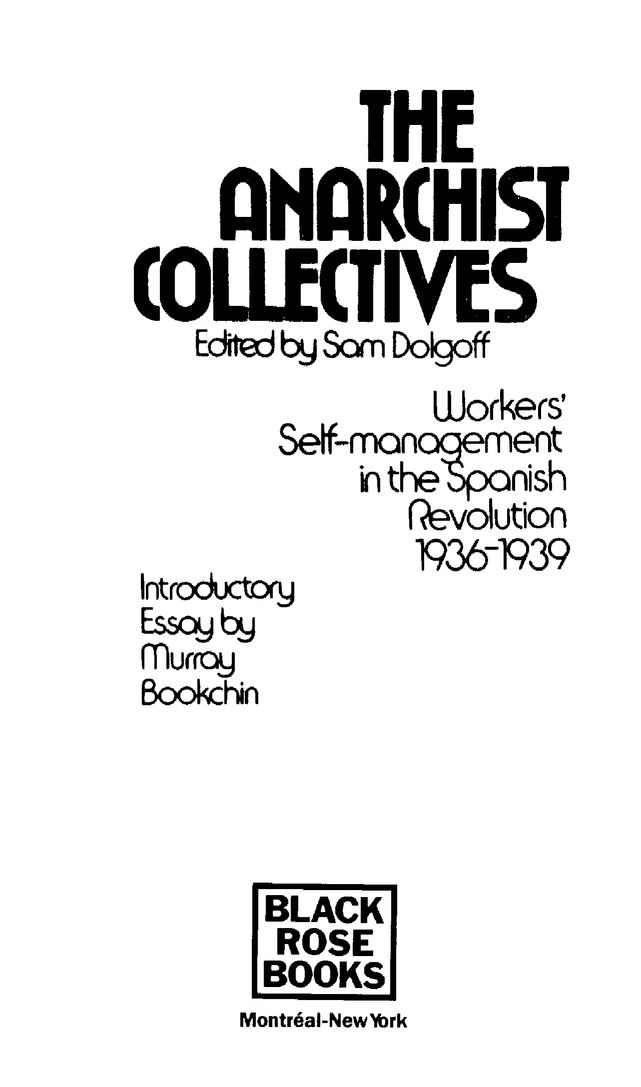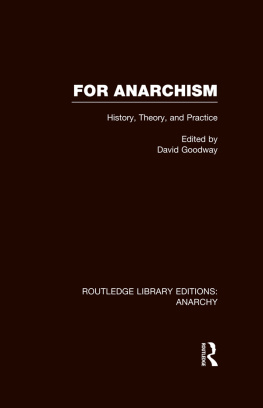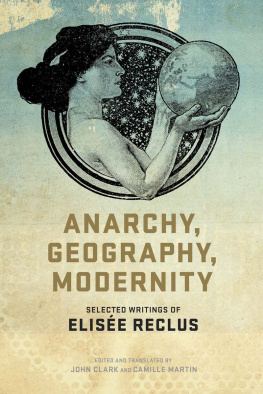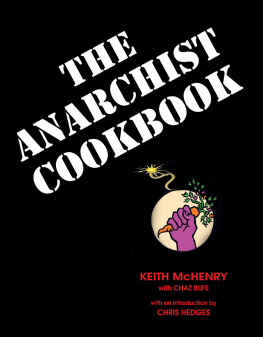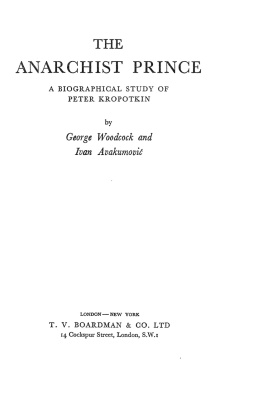Table of Contents
To the heroic workers and peasants of Spain!
To my comrades, the Spanish Anarchists,
who perished fighting for freedom!
To the militants who continue the struggle!
Preface
The Spanish Social Revolution has been long neglected in English language works. Its importance as a revolutionary event and model, and as a concrete example of workers self-management by the people is just not recognized. My purpose in this collection is to provide an introduction to this unique experience. In my first chapter and friend Bookchins introductory essay, a general overview and context is presented. Most important, of course, is that this was a real experience for the people who took part. Through their words and deeds and the observations of the authors used in this collection, it is hoped that the reader will gain a meaningful understanding of the aims and organization of the anarchist collectives.
The material has been divided into two main sections. The first provides essential background information: the nature of the Spanish Revolution, the collectivist tradition, the development of the libertarian labor movement in Spain, and the historical events leading up to and then culminating in the destruction of the collectives.
The second, and main, section deals with the actual social revolutionthe overall characteristics of agrarian collectivization and industrial socialization. It begins with a discussion about economic coordination, the place and nature of money in the collectives, and includes statistics on the number of collectives. It then deals with actual descriptions of life in the collectives, first under industrial socialization, and then in the rural collectives: how the new institutions were established, how they functioned, how production and distribution were handled; about coordination, exchange, relations between collectives, and between collectivized and non-collectivized areas. The book ends with a short evaluation of the anarchist collectives with some comments on their relevance and lessons.
The glossary, bibliography and appendices add to the overall usefulness of this volume. The photographs reproduced within begin to correct the visual bias that has left a plethora of war scenes but very little reflecting the constructive aspects of the Spanish Social Revolution. Most of the pictures are from contemporary sources held by the editor. I would like to thank Victor Berch, Special Collections Librarian at Brandeis University for permission to use the pictures on pages 104, 141, and 142.
The observers speaking in these selections visited the same regions and often the same collectives at different times within the short span of approximately two years. Since each observer stressed what seemed most important to him, their accounts supplement each other, thus providing a more balanced view of the new way of life than any single observer could have done. Under these circumstances, though, some repetition is inevitable. The translations I have made are strict to the meaning, but are not literal, for I have also been concerned with giving the spirit of the words, and with reducing repetitions.
Finally I would like to express my thanks to all the farsighted and brave people whose work I have used in putting together this collection. (A short biography on each is included in the bibliography.) Their efforts have immortalized a social experience of momentous importance. My object has been to present them to the English reader within a context that will be useful.
ACKNOWLEDGEMENTS
It is with the deepest appreciation that I acknowledge the contributions to the present work of the following persons:
My friend, Chuck Hamilton, for his tireless technical and editorial labors in turning a poorly typed manuscript into the finished book.
To my friend, Dr. Paul Avrich, for reading the manuscript and making valuable suggestions.
To my comrade, Murray Bookchin, who first encouraged me to undertake this project.
Last, but by no means least, my wife Esther who scrupulously examined the manuscript as it was being written and detected many errors.
New York City
January, 1974
Introductory Essay by Murray Bookchin
In the morning hours of July 18, 1936, General Francisco Franco issued the pronunciamiento from Las Palmas in Spanish North Africa that openly launched the struggle of Spains reactionary military officers against the legally elected Popular Front government in Madrid.
The Franco pronunciamiento left little doubt that, in the event of victory by the Spanish generals, a parliamentary republic would be replaced by a clearly authoritarian state, modelled institutionally on similar regimes in Germany and Italy. The Francista forces or Nationalists, as they were to call themselves, exhibited all the trappings and ideologies of the fascist movements of the day: the raised open-palm salute, the appeals to a folk-soil philosophy of order, duty; and obedience, the avowed commitments to smash the labor movement and end all political dissidence. To the world, the conflict initiated by the Spanish generals seemed like another of the classic struggles waged between the forces of fascism and the forces of democracy that had reached such acute proportions in the thirties. What distinguished the Spanish conflict from similar struggles in Italy, Germany, and Austria was the massive resistance the forces of democracy seemed to oppose to the Spanish military. Franco and his military co-conspirators, despite the wide support they enjoyed among the officer cadres in the army, had grossly miscalculated the popular opposition they would encounter. The so-called Spanish Civil War lasted nearly three yearsfrom July 1936 to March 1939-and claimed an estimated million lives.
For the first time, so it seemed to many of us in the thirties, an entire people with dazzling courage had arrested the terrifying success of fascist movements in central and southern Europe. Scarcely three years earlier, Hitler had pocketed Germany without a shred of resistance from the massive Marxist-dominated German labor movement. Austria, two years before, had succumbed to an essentially authoritarian state after a week of futile street-fighting by Socialist workers in Vienna. Everywhere fascism seemed on the march and democracy in retreat. But Spain had seriously resistedand was to resist for years despite the armaments, aircraft, and troops which Franco acquired from Italy and Germany. To radicals and liberals alike, the Spanish Civil War was being waged not only on the Iberian peninsula but in every country where democracy seemed threatened by the rising tide of domestic and international fascist movements. The Spanish Civil War, we were led to believe, was a struggle between a liberal republic that was valiantly and with popular support trying to defend a democratic parliamentary state against authoritarian generalsan imagery that is conveyed to this very day by most books on the subject and by that shabby cinematic documentary, To Die in Madrid.
What so few of us knew outside of Spain, however, was that the Spanish Civil War was in fact a sweeping social revolution by millions of workers and peasants who were concerned not to rescue a treacherous republican regime but to reconstruct Spanish society along revolutionary lines. We would scarcely have learned from the press that these workers and peasants viewed the republic almost with as much animosity as they did the Francistas. Indeed, acting largely on their own initiative against republican ministers who were trying to betray them to the generals, they had raided arsenals and sporting-goods stores for weapons and with incredible valor had aborted the military conspiracies in most of the cities and towns of Spain. We were almost totally oblivious to the fact that these workers and peasants had seized and collectivized most of the factories and land in republican-held areas, establishing a new social order based on direct control of the countrys productive resources by workers committees and peasant assemblies. While the republics institutions lay in debris, abandoned by most of its military and police forces, the workers and peasants had created their own institutions to administer the cities in republican Spain, formed their own armed workers squads to patrol the streets, and established a remarkable revolutionary militia force to fight the Francista forcesa voluntaristic militia in which men and women elected their own commanders and in which military rank conferred no social, material, or symbolic distinctions. Largely unknown to us at that time, the Spanish workers and peasants had made a sweeping social revolution. They had created their own revolutionary social forms to administer the country as well as to wage war against a well-trained and well-supplied army. The Spanish Civil War was not a political conflict between a liberal democracy and a fascistic military corps, but a deeply socio-economic conflict between the workers and peasants of Spain and their historic class enemies, ranging from the landowning grandees and clerical overlords inherited from the past to the rising industrial bourgeoisie and bankers of more recent times.


